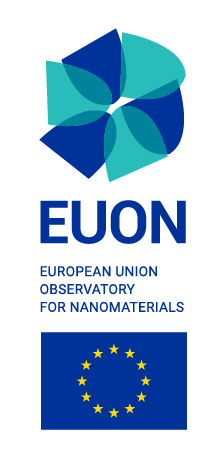
Butylated hydroxytoluene (BHT), also known as dibutylhydroxytoluene, is a lipophilic organic compound, chemically a derivative of phenol, that is useful for its antioxidant properties. BHT is widely used to prevent free radical-mediated oxidation in fluids and other materials, and the regulations overseen by the U.S. F.D.A.—which considers BHT to be "generally recognized as safe"—allow small amounts to be added to foods. Despite this, and the earlier determination by the National Cancer Institute that BHT was noncarcinogenic in an animal model, societal concerns over its broad use have been expressed. BHT has also been postulated as an antiviral drug, but as of December 2022, use of BHT as a drug is not supported by the scientific literature and it has not been approved by any drug regulatory agency for use as an antiviral.
A biocide is defined in the European legislation as a chemical substance or microorganism intended to destroy, deter, render harmless, or exert a controlling effect on any harmful organism. The US Environmental Protection Agency (EPA) uses a slightly different definition for biocides as "a diverse group of poisonous substances including preservatives, insecticides, disinfectants, and pesticides used for the control of organisms that are harmful to human or animal health or that cause damage to natural or manufactured products". When compared, the two definitions roughly imply the same, although the US EPA definition includes plant protection products and some veterinary medicines.

Sunscreen, also known as sunblock or sun cream, is a photoprotective topical product for the skin that helps protect against sunburn and prevent skin cancer. Sunscreens come as lotions, sprays, gels, foams, sticks, powders and other topical products. Sunscreens are common supplements to clothing, particularly sunglasses, sunhats and special sun protective clothing, and other forms of photoprotection.

Zinc pyrithione is a coordination complex of zinc. It has fungistatic and bacteriostatic properties and is used in the treatment of seborrhoeic dermatitis and dandruff.

Registration, Evaluation, Authorisation and Restriction of Chemicals (REACH) is a European Union regulation dating from 18 December 2006. REACH addresses the production and use of chemical substances, and their potential impacts on both human health and the environment. Its 849 pages took seven years to pass, and it has been described as the most complex legislation in the Union's history and the most important in 20 years. It is the strictest law to date regulating chemical substances and will affect industries throughout the world. REACH entered into force on 1 June 2007, with a phased implementation over the next decade. The regulation also established the European Chemicals Agency, which manages the technical, scientific and administrative aspects of REACH.

The European Chemicals Agency is an agency of the European Union working for the safe use of chemicals. It manages the technical and administrative aspects of the implementation of the European Union regulation called Registration, Evaluation, Authorisation and Restriction of Chemicals (REACH). ECHA is the driving force among regulatory authorities in implementing the EU's chemicals legislation. ECHA has to ascertain that companies comply with the legislation, advances the safe use of chemicals, provides information on chemicals and addresses chemicals of concern. It is located in Helsinki, Finland. ECHA is an independent and mature regulatory agency established by REACH. It is not a subsidiary entity of the European Commission.
Icaridin, also known as picaridin, is an insect repellent which can be used directly on skin or clothing. It has broad efficacy against various arthropods such as mosquitos, ticks, gnats, flies and fleas, and is almost colorless and odorless. A study performed in 2010 showed that picaridin spray and cream at the 20% concentration provided 12 hours of protection against ticks. Unlike DEET, icaridin does not dissolve plastics, synthetics or sealants, is odorless and non-greasy and presents a lower risk of toxicity when used with sunscreen, as it may reduce skin absorption of both compounds.

Decamethylcyclopentasiloxane, also known as D5 and D5, is an organosilicon compound with the formula [(CH3)2SiO]5. It is a colorless and odorless liquid that is slightly volatile.
IUCLID is a software application to capture, store, maintain and exchange data on intrinsic and hazard properties of chemical substances. Distributed free of charge, the software is especially useful to chemical industry companies and to government authorities. It is the key tool for chemical industry to fulfill data submission obligations under REACH, the most important European Union legal document covering the production and use of chemical substances. The software is maintained by the European Chemicals Agency, ECHA. The latest version, version 6, was made available on 29 April 2016.
The European Chemicals Bureau (ECB) was the focal point for the data and assessment procedure on dangerous chemicals within the European Union (EU). The ECB was located in Ispra, Italy, within the Joint Research Centre (JRC) of the European Commission. In 2008 the ECB completed its mandate. Some of its activities were taken over by the European Chemicals Agency (ECHA); others remained within the Joint Research Centre. The history of the ECB has been published as a JRC technical report.

Polyhexanide is a polymer used as a disinfectant and antiseptic. In dermatological use, it is spelled polihexanide (INN) and sold under the names Lavasept, Serasept, Prontosan, and TEBASEPT. PHMB has been shown to be effective against Pseudomonas aeruginosa, Staphylococcus aureus, Escherichia coli, Candida albicans, Aspergillus brasiliensis, enterococci, and Klebsiella pneumoniae.
A substance of very high concern (SVHC) is a chemical substance which has been proposed as a candidate for inclusion on the Authorization or Restriction list of REACH. The addition of a substance to the SVHC Candidate List by the European Chemicals Agency (ECHA) is the first step in the procedure for the authorisation or restriction of a chemical. It is expected that industries operating in EU member states abide by the regulations of REACH and submit chemicals for consideration when appropriate.
The European chemical Substances Information System (ESIS) was a chemoinformatics database that stored information system on chemicals of the European Union. It was created in the year 2003 by the former European Chemicals Bureau, which completed its mandate in 2008. ESIS was set up by the Joint Research Centre of the European Commission in order to make data on the safety of chemicals more readily accessible to the public, offering a single search tool on chemicals and the legislation under which they are presently covered. By October 3, 2013, ESIS contained 14,897 substance records.
The Biocidal Products Directive (BPD) also known as the Biocides Directive is European Union Directive, (98/8/EC), which concerns biocides. It is officially known as Directive 98/8/EC of the European Parliament and of the Council of 16 February 1998 concerning the placing of biocidal products on the market. In 2013 the Biocidal Products Directive was superseded by The Biocidal Products Regulation.

Galaxolide is a synthetic musk with a clean sweet musky floral woody odor used in fragrances. It is one of the musk components that perfume and cologne manufacturers use to add a musk odor to their products. Galaxolide was first synthesized in 1965, and used in the late 1960s in some fabric softeners and detergents. High concentrations were also incorporated in fine fragrances.

Octamethylcyclotetrasiloxane, also called D4, is an organosilicon compound with the formula [(CH3)2SiO]4. It is a colorless viscous liquid. It is a common cyclomethicone. It is widely used in cosmetics.

The term cosmetic packaging is used for containers and secondary packaging of fragrances and cosmetic products. Cosmetic products are substances intended for human cleansing, beautifying and promoting an enhanced appearance without altering the body's structure or functions.

A pesticide, also called Plant Protection Product (PPP), which is a term used in regulatory documents, consists of several different components. The active ingredient in a pesticide is called “active substance” and these active substances either consist of chemicals or micro-organisms. The aims of these active substances are to specifically take action against organisms that are harmful to plants. In other words, active substances are the active components against pests and plant diseases.

The European Union Observatory for Nanomaterials (EUON) is an initiative that aims to increase the transparency and availability of information on nanomaterials to the general public. It was launched in June 2017.

Methyl isonicotinate is a toxic compound, which is used as a semiochemical. Other names for this compound are 4-pyridine carboxylic acid, and isonicotinic acid methyl ester. This compound is slightly toxic to the human body. It has an irritating effect on the eyes, skin, and respiratory tract. Moreover, the compound is used as the active ingredient in several sticky thrip traps to monitor and catch thrips in greenhouses.













